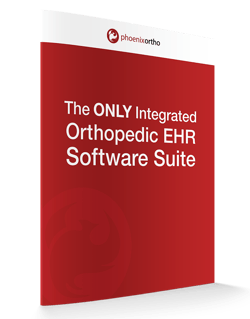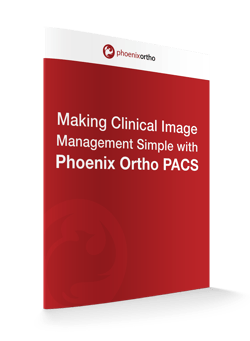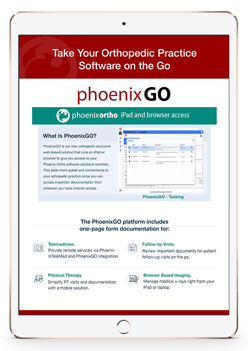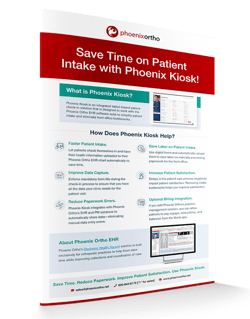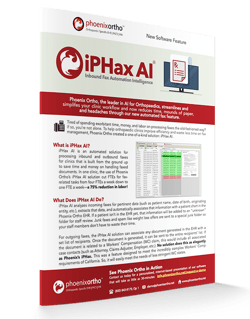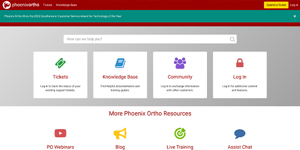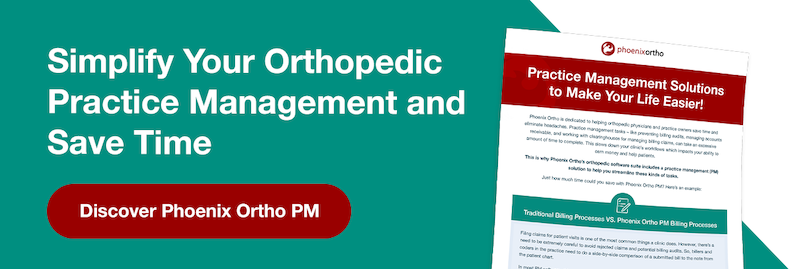Orthopedic clinics help a lot of people on a daily basis. In fact, orthopedic physicians often report seeing more than 50 patients per day. Meanwhile, sources like Mvorganizing.org state that the average number of patients healthcare providers see in general is around 20.
However, despite seeing significantly more patients than most other specialties, many orthopedic surgeons struggle with achieving the revenue growth they need to grow their practice or even just to stay afloat during turbulent times.
Even primary care hospitals can struggle with growing revenue in the wake of the COVID-19 epidemic—which estimates from the American Hospital Association (AHA) stated “were projected to lose $323 billion” in 2020 alone and, despite the multiple vaccines available and the growing number of vaccinated people, the AHA projected that “hospitals and health systems could lose an additional $53 to $122 billion in revenue in 2021.”
What are the obstacles that orthopedists face when it comes to growing revenue? Today, we’ll take a look at some of the challenges that may hold orthopedic physicians back from growing their revenue. We will also discuss a few simple ways to deal with these obstacles.
3 Obstacles Orthopedic Clinics Face in Growing Revenue
1. Limited Client Base
One of the biggest limitations to any business’ growth is the available client base. For an orthopedic clinic, this is normally based on the number of patients who:
- Live close enough to the clinic to make the drive;
- Have the money or the insurance to afford care; and
- Are in need of orthopedic care of some kind.
Being limited to a relatively small geographic area can be extremely limiting for an orthopedic practice. Meanwhile, finding prime real estate near a large population of potential patients can be extremely tough—and many such locations already hold established competitors.
How Can I Grow My Client Base?
One way for orthopedic clinics to grow their client base is to adopt a telemedicine solution. With remote care software, physicians can offer virtual visit services to app users—eliminating barriers to new business and serving a much larger client base than traditional practices can provide.
2. Medical Billing Code Mistakes
Setting an appropriate Evaluation and Management (E & M) code for a patient visit is a crucial part of collecting revenue. However, it can be a bit of a delicate balancing act. Mistakes in setting E & M codes can lead to clinics either under-billing for services rendered (limiting their income) or to claim rejections and billing code audits that cause delays in revenue collection.
Manually setting billing codes is also a slow and tedious process as physicians (or billing code specialists) have to evaluate the patient visit as a whole to set an appropriate billing code that can stand up to an audit.
How Can I Streamline E & M Code Management?
One way to streamline E & M code management is to hire a billing code specialist to manage the task of setting appropriate codes for you. However, even a specialist can only set codes according to the information they’re given.
A better solution is to use an Electronic Health Records (EHR) software that has a built-in billing code solution to help set your E & M codes. With an EHR, you can insert all of the patient notes about the visit electronically—which makes it much easier to suggest accurate codes that maximize revenue per visit while minimizing the risk of audits.
3. Long Delays in Collections for Submitted Claims
Even without the delays caused by billing code mistakes and audits, many orthopedists may struggle to collect money in a timely fashion. Part of the problem is when there’s no real integration between the clearinghouse and the PM solution—which leads to days-long delays in claims processes. Some PM solutions claim to have an integration, but merely have an interface that doesn’t always allow for real-time communications (or unlimited free eligibility checks).
This slows down the revenue cycle for the clinic—impacting the practice’s cash flow and making it harder for the owners to stay afloat.
How Can I Eliminate Delays in Collections?
Finding a Practice Management (PM) solution with a truly integrated automated clearinghouse that can process claims electronically can go a long way toward improving revenue cycles. Instead of waiting days for a response, submissions can be automatically reviewed in minutes and sent straight to the clinic’s PM software or the doctor’s email inbox.
It can also help to focus on collecting at the point of care—ensuring that patients pay their copays and deductibles before they leave the clinic.
Types of Software That Can Provide ROI for Orthopedic Clinics
Technology can provide an effective solution for orthopedic practices to streamline operations and solve numerous problems. A few key examples of technology solutions that can provide a significant return on investment (ROI) for orthopedic clinics include:
- Electronic Health Records Software. Even without government regulations that incentivized or mandated the use of electronic patient data solutions, EHR software remains a must-have for modern medical practices. EHR software makes it easier for staff within a practice to track and share updated patient data to ensure higher quality of care, simplified billing management, and time savings on basic patient data tasks.
- Picture Archiving and Communications System (PACS) Software. PACS software is a necessity for managing the ordering, storage, and management of medical images. In orthopedic practices, PACS solutions help doctors eliminate delays. For example, instead of having to wait for an X-ray sheet to be brought to the patient room, physicians can bring it up on their computer and show it to the patient right away. When paired with an EHR, the images are stored in the patient file, simplifying image management and reducing the risk of image mix-ups.
- Practice Management Software. Running the business aspect of a medical practice can be extremely difficult and time-consuming. An effective PM solution can help orthopedists streamline paperwork, claims submissions, and other business workflows to save time and effort on managing their business.
- Patient Intake Software. Handling patient check-in processes to reduce data entry errors (such as patients forgetting to fill out their health history information, or said information being entered incorrectly by front office staff) is crucial for busy orthopedic practices. A patient intake software solution can help streamline patient data capture and, in some cases, even streamline collections by allowing patients to enter payment information at the point of care. This eliminates the labor and expense of printing forms and then scanning them into the patient chart solution.
- Telemedicine Software. Virtual patient visits have become the new gold standard for care convenience. By using telemedicine software, orthopedists can grow their available patient pool, reduce congestion in their clinic, reduce infectious disease risks, and virtually eliminate patient wait times.
- Mobile Prescription Apps. Managing patient prescriptions can be a challenge. However, with a mobile prescription management solution, doctors can write prescriptions on the go without taking a lot of time out of their day. Also, when clinic staff write a prescription, doctors can review and approve (or reject) them remotely with some apps.
These are a lot of different software solutions for one practice to use! However, they can provide a significant boost to a practice’s efficiency—helping doctors save hours of time each day.
The neat thing is, you don’t have to go with a different software vendor for each of the above solutions. Phoenix Ortho’s software suite includes solutions for all of the above types of software—so you only have to use one vendor to get the benefits of all of this technology.
Are you ready to transform your practice with dedicated, orthopedic-exclusive software solutions? Reach out to Phoenix Ortho today!
Schedule a 1:1
Get in touch with Phoenix Ortho to learn more about how you can save time, money, and mouse clicks with an orthopedic-specific EHR.





